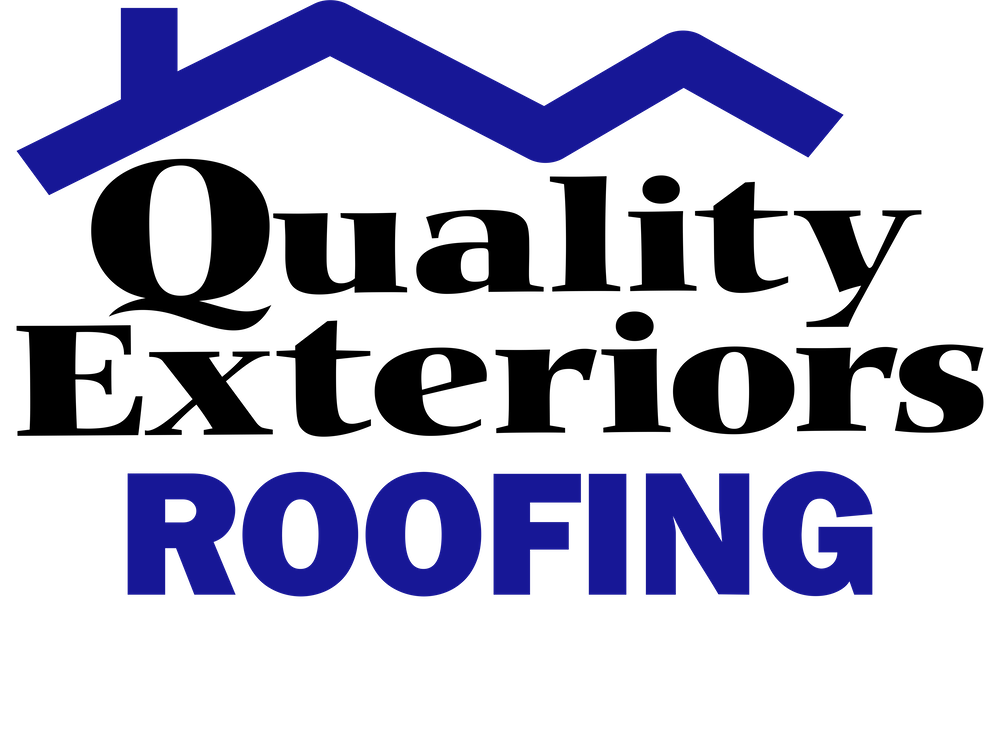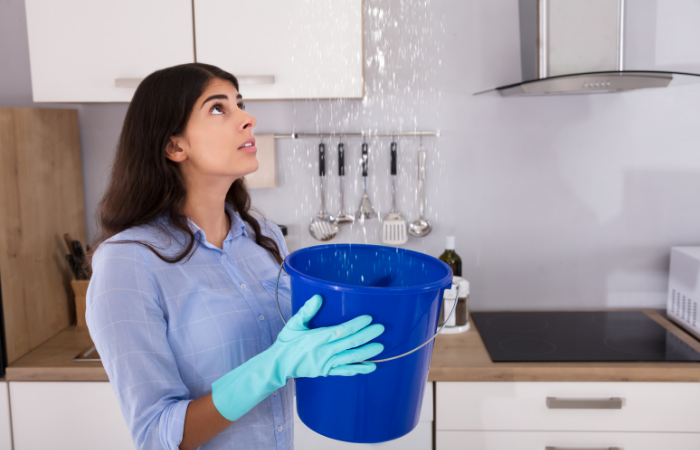A home is, for most individuals, the largest investment they will ever make. Your roof protects not only you and your family from the elements, but also many other components of your home, including the attic, siding, and foundation. As such, it is understandable that you’d want to safeguard your roof. In most cases, it’s the first line of protection against Mother Nature. What happens, though, if that first line of defense doesn’t stop roof leaks?
Once you notice that moisture is getting into your home, you may wonder why your roof is leaking. The answer isn’t always obvious because a leaky roof might be caused by a variety of issues or a combination of factors. A leaking roof can be caused by a sudden event, such as a hail storm or a fallen tree. In other cases, a leaking roof gradually develops over time. Poor roof upkeep or weather are often the culprits.
No matter where your leak is coming from or what caused it, it’s important to get it fixed sooner rather than later. The longer that you allow a leak to remain, the more roof damage it can do. If you are experiencing leaks and need a roof repair or roof replacement, call a Shreveport-Bossier professional roofing contractor at Quality Exteriors today at (318) 747-1254.
What To Do If Your Roof Is Leaking
Knowing what causes a leak and where it is coming from is vital. However, it’s equally important to know how to keep the damage to your house to a minimum until it can be repaired.
The first step is determining whether or not you have a leak. The following are some early signs to look for in your home:
- Water damage or moisture spots on your ceiling
- Peeling or bubbling interior paint during heavy storms
- Missing shingles
- A musty or damp odor, most likely in the attic
- Water drip sounds in the home
- Moldy or moist drywall
- Decking (the wood floor beneath the shingles and underlayment) is wet or decaying
The next step is determining where the leak is coming from. Keep in mind that it might not be in the same place as any water stains, as water can move many feet along the inside of your room line from the entry location. This means that the water stain on your ceiling could be many feet away from the actual source of the leak.
Once you’ve discovered the source of the water leak, it’s time to try to limit the damage until a professional can fix it. During rainstorms, one option to prevent water from causing too much damage is to catch it in a bucket. If water is collecting in the ceiling, make a small hole with a screwdriver. This directs the water to a single point. Just make sure you have a bucket handy to catch the water droplets!
How Do Leaks Form?
Simply put, leaking roofs are caused by damage. But how do roofs get damaged in the first place? There are many factors that may cause damage to your roof. For most homeowners, the most common cause of damage that leads to a leaky roof is broken or missing shingles. Shingles can become damaged for a number of reasons. For example, severe wind, weather and incorrect installation can cause shingles to be damaged, as can impacts and gradual wear and tear.
The bad news is that regardless of how your leak formed, leaky roofs can cause drywall damage, rotted wood, and mold growth. The good news is that there are repair options available that fix these issues and save your roof before it’s too late. The professional crew at Quality Exteriors will pinpoint the source of your leak and provide recommendations for resolving the issue.
The Most Common Causes of Roof Leaks
As mentioned before, the more common causes of damaged roofs are improper installation, the weather, impact damage, and old age. However, there are plenty more reasons that your roof might have started leaking. Our professional roofing experts in Bossier will cover each of these issues below:
- Improper Installation: Improper installation is rare if homeowners do their homework and choose a professional roofing contractor with proper training and experience. It’s when homeowners attempt to install their own shingles that they are often installed improperly.
- Impact Damage: The homeowner stepping on the roof, squirrels and/or other animals running across it, or hail damage are the most common causes of impact damage to the roof. Sudden roof penetrations, such as a tree branch falling on the roof during a storm, can also cause roof leaks.
- Severe Weather: Most roof damage is typically caused by the weather. Shingles can be ripped off by strong winds, and hail can cause holes in the shingles. Frost and high heat cause shingles to crack over time due to expansion and contraction. Water gets into and under shingles when this happens.
- Old Age: Roofs also leak because they are old. Like everything else, they wear out over time and need replacing. Older roofs begin to crack and decay, making them more vulnerable to damage.
- Faulty Flashing, Roof Vents, or Ridge Caps: Flashing is used around the chimney and its sidewalls to keep water out of a home. Eventually, the mortar on a chimney erodes, causing the metal flashing to loosen and allow a leak. In addition, a Plastic vent pipe is prone to cracking after a few years. Further, if the gaskets around the vent pipes are not properly sealed, leaks can occur. Ridge caps are used to close the gap between the two slopes of a roof at the summit. They must be properly fortified, otherwise, holes will form and create leaks in your roof.
- Bad Pipe Boot: This is the plumbing that runs up the roof and rests on top of it. A rubber roof boot does not last nearly as long as a roof and can easily be damaged by harsh weather conditions.
- Gutter Clog: Your gutters can overflow onto your roof if they become clogged with leaves, twigs, or other debris, and ceiling leaks can happen if the water oversaturates. In addition, extremely cold temperatures can freeze water inside the gutters. Then, extra water has nowhere to go and tends to creep up the rooftop and cause water to leak through the outside walls of a building or residence.
- Ice Dams: An ice dam is an ice-covered barrier that forms at the edge of a roof. As a result of the ice blockage, melting snow cannot drain off the roof. This untreated water typically seeps into a structure. Damage to the walls, ceilings, insulation, and other components can result.
How To Fix a Leaking Roof
You may be able to handle a little leak on your own at times. Usually, this happens when nails in the roof cause the leak. You can prevent extra water from dripping into the attic by applying a sealant around the nail heads. Other times, all you need is a little additional sealant or caulk around the roof joints, as well. But take note, you can’t rely on caulk to stop a leak in the long run. It’s always ideal to replace rusted or damaged flashing around these joints if at all possible.
However, even if your leak is small, hiring a roofing contractor is your best bet. He or she can inspect not only the roof’s overall structure but also any trouble spots that could lead to a future leak.
How Long Can You Leave a Leaking Roof?
There is no way to tell how long a leaky roof may be ignored before causing harm. There are a lot of variables at play here, so it’s better to be careful and get your roof leak fixed as soon as possible.
When Should You Call a Professional to Fix a Leak?
Most of the time, it’s best to contact a professional roofer to repair your roof right away.
It is very important to maintain the condition of your roof. You should also take a look at your attic at least twice a year to note any potential warnings signs such as:
- Mold
- Algae stains on the plywood
- Rusty roofing nails
- Nailhead with black rings around it
- Damp or wet insulation
These are all indicators that you need roof leaking repair. Call the Quality Exteriors team ASAP if you notice any of these signs of a roof leak.
Prevent Leaking Roof
Of course, preventing a leak from occurring in the first place is ideal. You can do this by hiring a Shreveport-Bossier professional roofing company to perform regular roof maintenance on your home or business. At Quality Exteriors, our technicians examine routinely for warning signs and potential leak spots. We look at several areas of the roof during an inspection, including attic vents, chimneys that stick up through the roof, and spots for potential ice dams in cold weather months. Doing this helps stop leaks before they start and saves you money on future repairs or replacements.
Avoiding going onto the roof is another way to protect it. Foot traffic is harmful to all roofs, no matter how sturdy. You should also avoid planting tall trees near your home or trimming existing trees that may tower over your roof. In addition to the possibility of falling limbs and branches, tall trees may prevent your roof from drying fast after it rains, allowing plant life such as algae to grow. Animals also use nearby trees to climb atop roofs. Animal activity on your roof can cause damage and small holes, as well.
Contact Us Today to Stop Your Roof Leak
Even small leaks aren’t usually something you should try to fix on your own. It’s not just risky because you’ll be putting yourself in harm’s way by working on the roof, but it could also result in improperly completed roof repairs.
Call Quality Exteriors instead. Not only can our Shreveport-Bossier roofing specialists help you find the source of the leak, but they can also repair it with ease. We also provide a variety of services in addition to leak repairs, such as roof inspections, full roof replacements, window installation and replacement, siding installation and repair, and more.
For more information about how we can assist you with repairing your roof, call Quality Exteriors Roofing today at (318) 747-1254. You can also book a free home or business inspection in Bossier City by completing the online intake form found on our website. Let us know what our team of professionals is more than happy to help you with all of your roofing, window, and siding needs.

